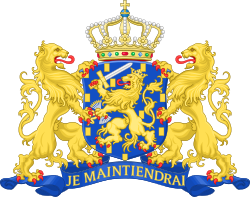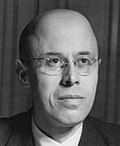Third Gerbrandy cabinet Fourth London cabinet | |
|---|---|
| Cabinet of the Netherlands | |
| Date formed | 23 February 1945 |
| Date dissolved | 25 June 1945 (Demissionary from 12 May 1945) |
| People and organisations | |
| Head of state | Queen Wilhelmina |
| Head of government | Pieter Sjoerds Gerbrandy |
| No. of ministers | 14 |
| Member party | Roman Catholic State Party (RKSP) Anti-Revolutionary Party (ARP) Free-thinking Democratic League (VDB) |
| Status in legislature | National unity government (War cabinet) |
| History | |
| Legislature terms | 1937–1946 |
| Predecessor | Second Gerbrandy cabinet |
| Successor | Schermerhorn–Drees cabinet |
| Part of the Politics series |
 |
|---|
| |
The Third Gerbrandy cabinet, also called the Fourth London cabinet, was the Dutch government-in-exile from 23 February 1945 until 25 June 1945. The cabinet was formed by the political parties Roman Catholic State Party (RKSP), Anti-Revolutionary Party (ARP) and the Free-thinking Democratic League (VDB) following the resignation of the Second Gerbrandy cabinet on 27 January 1945. The national unity government (War cabinet) was the last of four war cabinets of the government-in-exile in London during World War II. [1]












